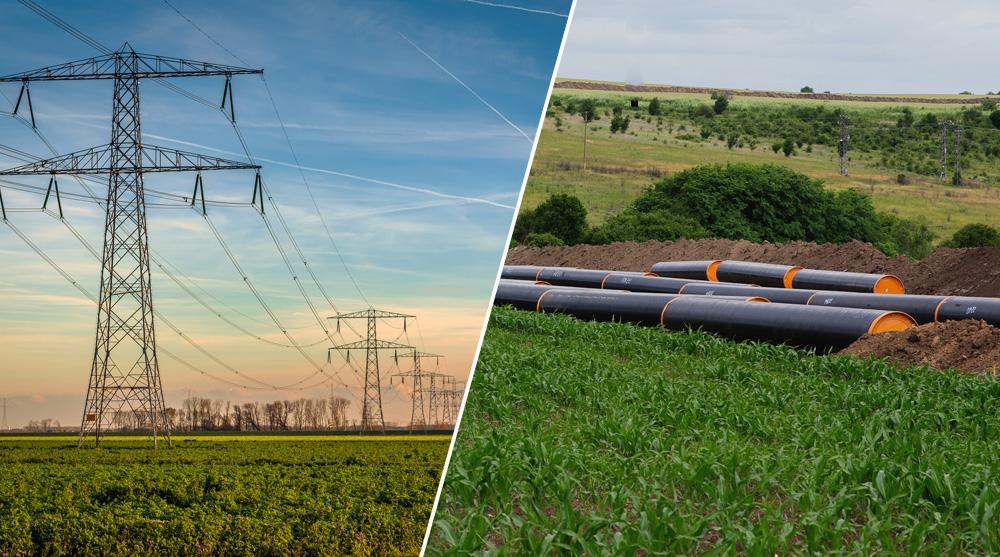The EU has set a bold and far-reaching goal to become the first climate-neutral continent by 2050, moving from a fossil fuel-based energy system to a decarbonised economy.
We all know that for this to happen, we need to install more renewable electricity generation, such as solar panels, wind turbines (and increasingly offshore) and to use more electric cars, as well as using energy more efficiently wherever possible. Overall, the use of electricity in our energy system will increase significantly. At the same time, the role of unabated natural gas will decrease while the share of renewable and low-carbon gases will have to increase in some sectors. A well-planned and integrated energy infrastructure is essential to achieve these objectives. It is the part of the system that enables renewable energy to be incorporated into the grid, and then transmits and distributes energy across the EU from the supply source (whether imported or generated within the EU) to the end user, or stores energy until it is needed. It provides for a reliable and secure energy system that helps to keep prices at check.
With EU policies encouraging EU countries to cooperate more efficiently with neighbouring countries, there has been much progress in our energy infrastructure in recent years. Projects of common interest (PCIs) are key cross border infrastructure projects, which are often important in size, demanding in resources and take many years to complete, but they benefit many people in the regions concerned. They help to achieve our energy policy and climate objectives: affordable, secure and sustainable energy for all citizens. Between 2014 and 2020, the EU funding instrument “Connecting Europe Facility” contributed to the financing of the development of 107 PCIs, with a total budget of EUR 4.7 billion. Nearly two-thirds of this amount was spent on electricity transmission and storage projects, as well as smart electricity grids.
With this policy support, EU countries and regions have been able to diversify their energy sources and improve inter-connections, and thereby secure safe and affordable supplies of energy to citizens, all around the EU. Outages and blackouts have become rarer and rarer. The challenge now is to gradually adapt the system from our current situation predominantly based on fossil-fuel – much of it imported – to a decarbonised energy system. But this infrastructure transition must happen in a way that all EU citizens and companies continue to have safe and secure access to their energy requirements every single day, at an affordable price.
Better energy connections
The concept of trans-European energy networks encouraged EU countries to modernise their energy infrastructure – finally addressing structural shortcomings. For example, the synchronisation of the Baltic States’ electricity grid with the continental European network (CEN) is an essential political priority for the achievement of the energy union. The “Celtic interconnector” is a PCI that will connect Ireland and France through a new underwater connection and help to end Ireland’s energy isolation and the integration of renewables in the Irish electricity system. In the latest multi-annual EU budget, the CEF Energy section includes funds of EUR 5.83 billion for trans-European energy networks and cross-border projects in the field of renewable energy.
Whether at land or at sea, collaborative planning and implementation of energy infrastructure is crucial for the internal market and to address current challenges like our increasing need for electricity (generated from renewable energy), and the gradual phasing out of fossil fuels.
With better connections, surplus renewable energy in parts of Europe can be transported elsewhere, to where it is needed most. Imagine energy produced at wind farms in the North Sea, solar energy from southern Europe, or biomass from eastern European transported through the grid and used in remote areas, islands or in countries otherwise mostly dependent on energy produced from fossil fuels.
EU policy and support
The EU Trans-European Networks for Energy (TEN-E) policy is built on the principle of cooperation. To speed up the pace of modernising and upgrading EU energy infrastructure, so that it can sustain a climate-neutral society, the European Commission published proposals in December 2020 to revise the current rules. The proposals aim to deliver a more integrated energy system, upscale offshore renewable energy and decarbonise the gas sector. In short, the aim is to bring the rules for TEN-E into line with our ambition of becoming climate neutral by 2050. The proposals are currently under negotiation with Members of the European Parliament and with national Ministers of Energy in the Council – and final agreement on the new EU rules is expected by the end of 2021.
To benefit from the consideration, valuable input and expertise from all parties – from planning experts to local communities on the ground – the Commission organised in 2020 a public consultation and 4 stakeholder webinars seeking input to the TEN-E proposal from citizens, civil society, businesses and authorities.
Regional cooperation is a cornerstone for the selection of EU’s key energy infrastructure projects and the monitoring and implementation of the PCIs is in line with the highest standards in technology, environmental protection and citizen engagement. Since 2013, these projects have helped countries in the EU interconnect their markets, which in turn has increased trade and competitiveness and helped growing shares of renewable energies reach households and businesses across the EU.

